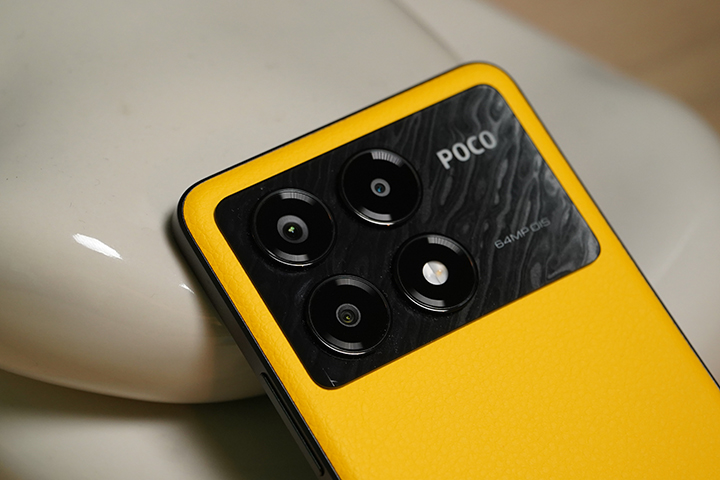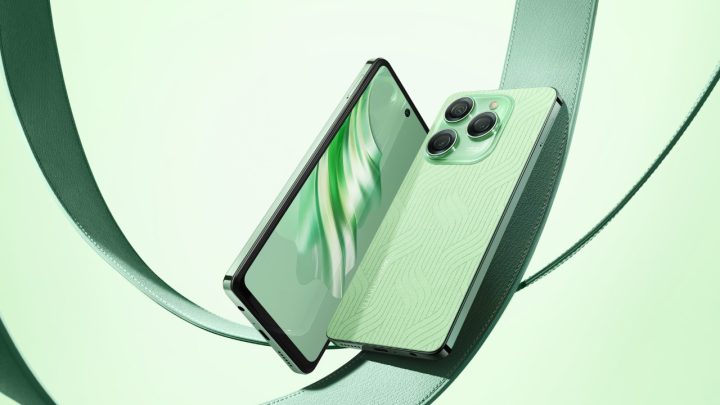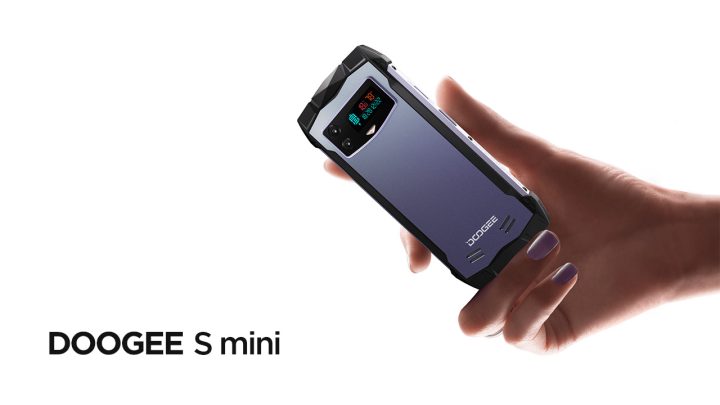POCO has established itself on providing budget-friendly yet high-performing smartphones over the years. So today, we’re going to take a look at the sixth iteration of their flagship lineup—the POCO F6.

This phone is a recipient of the new Snapdragon 8s Gen 3, which has established itself as a performance beast. Lucky for us, we managed to get our hands on a review unit and it did not disappoint.
For those interested in the POCO F6 Pro, we have a written review and video available for the device elsewhere. For reference, our unit has a configuration of 16GB of RAM with 512GB of UFS 4.0 storage.
So without further ado, let’s find out if the F6 can maintain POCO’s reputation.
Table of Contents
Design and Construction
The POCO F6 has a minimal design with a thin form-factor at 8-millimeters thin, weighing 179 grams. Honestly, this feels just as lightweight as last year’s iteration of the phone. On top of that, it has an IP64 rating for dust and water resistance too.

Our device came in a green colorway, which sports a matte-like metal texture for its frame and back panel. At first glance, I immediately took a liking to this iteration of the smartphone. In comparison to the predecessor’s glossy back panel, the increased smudge resistance from material alone is much appreciated.
The camera sensors are situated on the top left of the back panel, similar to the F5. We noticed that the new rendition of the phone has a noticeably bigger LED flash.

At the front, we have the F6’s display panel and the camera in a punch hole. It managed to keep the thin bezels from the previous model. It just goes to show that if it ain’t broke, don’t fix it!
For buttons and ports, the power switch and the volume rocker is seen on the right side. The left side is clean as a whistle, though.
At the bottom, we have one of two loudspeakers, a Type-C charging port, and the dual-sim card slot. On top, we have the other speaker, the device microphone, and an IR blaster.
However, I noticed that unlike the F5, the F6 doesn’t come with a 3.5mm audio port. If you’ve read my previous reviews, I’m a fan of traditional earphones. While this is sad, I guess it’s a sign to keep moving forward.
I’m pretty happy with the design efforts put into the F6. It’s not too fancy, but it’s not too drab either. I love how POCO improves their devices in certain aspects, but don’t take anything away from what already works.
Display, Multimedia, and Biometrics
This phone features a 6.67-inch CrystalRes 1.5K Flow AMOLED display with an adaptive refresh rate up to 120Hz. It’s also covered with Corning Gorilla Glass Victus for protection, and supports Dolby Vision.
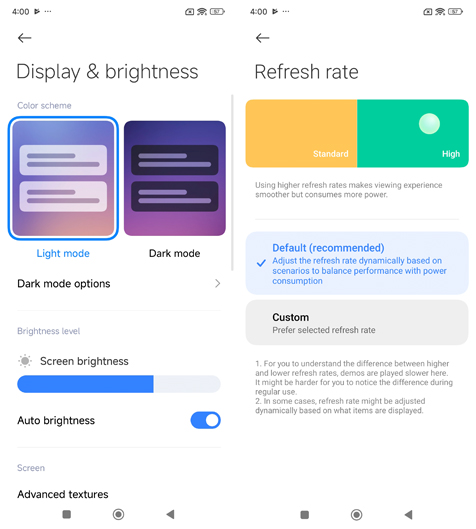
Power-conscious users can choose to toggle between frame rates under settings. We recommend sticking to auto-switch, though.
Compared to the POCO F5, the higher pixel density is evident with this device. Again, the thin bezels are noteworthy. It made for a consistent, immersive browsing and multimedia experience. The phone also peaks at 2,400 nits, which makes it easy to use outdoors with the scorching sun out.
For audio, the device has dual stereo speakers situated on the top and bottom of the device. You can also access Dolby Atmos via the UI’s quick settings. I highly recommend readers to make the most out of this with earbuds or headphones.

The speakers were pretty good, with notable clarity in the sound stage. They also didn’t get blocked when I held the phone horizontally while watching videos. It’s a small thing, but very nice from POCO’s end.
Biometrics were inclusive of the usual suspects for mobile security. Pattern, numeric, alphanumeric, a fingerprint sensor, and face unlock.
The fingerprint sensor is in-display at the bottom of the screen, although it wasn’t as quick to recognize my prints. This legitimately made me just use a code for unlocking the device when needed.
Meanwhile, the face unlock works as advertised, with nothing particular to write home about.
Cameras
Oddly enough, POCO decided to cut down on cameras for the F6. For those that missed it, this phone’s predecessor had a triple-rear camera system.

Now, the POCO F6 has dual-rear cameras, consisting of a 50-megapixel shooter with OIS and an 8-megapixel ultrawide. For selfies, the phone’s equipped with a 20-megapixel shooter.
However, its predecessor had a 64-megapixel shooter with the same 8-megapixel ultrawide lens plus a 2-megapixel macro.

After comparing previous and recent shots taken with both devices, we’re pretty content with what the F6 offers. I would even dare say that I preferred the F6 more.
It’s not expected to produce flagship-level photos. After all, it’s under a budgeted segment for smartphones. However, it managed to produce clear images with accurate colors.
I also noticed that its HDR isn’t too aggressive, either. Shots taken with the F6 also provide a good amount of detail to them.
I’ll share some shots from the device so readers can let me know what they think.
But honestly, I think the hidden gem for the device is its video capabilities. The POCO F5’s recordings are capped at 4K at 30fps, while the F6 can shoot at 4K at 60fps.

From experience, this made for buttery-smooth clips to help users stay ready for fleeting moments. It also has a steady video mode, although it caps at 1080p at 60fps with stabilization enabled.
Considering that POCO isn’t aiming too high for the camera segment of the device, they did pretty alright! After spending an ample amount of time with the device, I can see why the brand has many fans now.
OS, Apps, and UI
The POCO F6 runs on Xiaomi HyperOS out of the box based on Android 14. It’s what you would expect for a modern software setup. It’s smooth, clean, and (kind of) caters to the user experience.
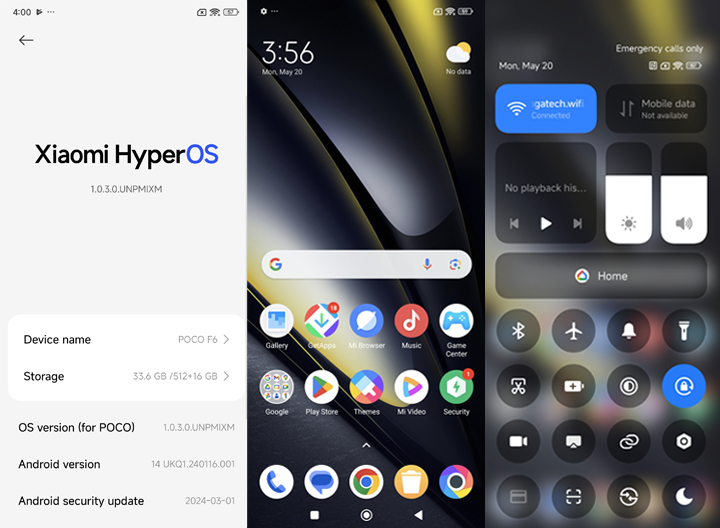
To elaborate, everything after the setup was fine. Upon getting the phone ready prior to my tinkering, HyperOS forces you to install apps from their recommendations.
While I only picked one app I intended to uninstall anyway, it ran on its own. It installed BIGO Live along with a random game. But other than that, I don’t have too much to nitpick from.

Moving on to apps, Lazada, YouTube, YouTube Music, and Netflix came pre-installed with the device. There are other apps like Spotify, Facebook, LinkedIn, TikTok, Agoda, and Booking.com that were also present. However, they were separated in another folder.
The Xiaomi-native apps were there, and I believe the only recognizable bloatware was separated in the Games folder. Plus points for POCO in recognizing that bloatware is annoying, while putting useful apps aside for future use.
Presently, we don’t have the information yet on how many Android updates and security patches the F6 will have. We’ll be sure to rewrite this portion of the segment as soon as we do. After all, we love ourselves a future-proofed device, right?

For the user interface, it’s your standard Android makeup. Dress up and personalize it, add or remove widgets and quick settings, etc.
I guess I would’ve appreciated it if the quick setting toggles had labels? While the logos itselves should be self-explanatory, I’m sure not every user would be aware. Software-wise, the F6 is okay. It’s not the best, but it’s not the worst. I feel pretty neutral about this segment.
Performance and Benchmarks
Powering the F6 is the new Snapdragon 8s Gen 3 courtesy of Qualcomm, paired with an Adreno 735 GPU. Also, our review unit had a configuration of 16GB of RAM with 512GB of UFS 4.0 storage.

The device was able to handle games seamlessly, only heating up during our testing period to get synthetic benchmark scores. I played Teamfight Tactics on the F6 with high settings enabled, with no frame drops nor slowing down.

After some digging, I found that the F6 is supported by LiquidCool Technology 4.0 with IceLoop. It must’ve been a big part of my smooth gameplay session.
I can only infer that the F6 only heated up during testing because of the strain it brings for mixed use variables. Speaking of, for those interested, I’ll leave our benchmark scores below.
| Benchmark | Score |
|---|---|
| Antutu | 1,407,849 |
| Antutu Storage Test | 181,066 |
| S. Read | 47,196 |
| Speed | 4113.0MB/s |
| S.Write | 35,515 |
| Speed | 3095.0MB/s |
| R. Access | 98,355 |
| R. Speed | 1579.0MB/s |
| W.Speed | 1090.0MB/s |
| 3D Mark: Wild Life | Maxed Out |
| Geekbench 6 CPU Single | 1871 |
| Geekbench 6 CPU Multi | 4683 |
| Geekbench 6 OpenCL | 7378 |
| Geekbench 6 Vulkan | 8479 |
| PC Mark Work 3.0 Performance | 15,838 |
The phone is quite literally more than capable performance-wise. It managed to max out 3D Mark: Wild Life, while having around 1.4 million in Antutu is insane.
For storage, it isn’t a slouch either. Having high read and write speeds makes for fast processing and faster storage. It has enough memory and space for users to do the most with the device.
Battery and Connectivity
The F6 packs a sizable 5,000mAh battery with support for 90W of turbo charging via USB Type-C. For those curious, the 90W adapter does indeed come with the box.

Depending on how long you use the phone, it should be more than enough for your daily activities. As always, we took the phone for a spin with some practical tests with varying results.
In PC Mark’s Work 3.0 Battery Test, our POCO F6 lasted 13 hours and 25 minutes. This test was conducted with 50% brightness, muted volume, and in airplane mode.
As for our video loop test, the phone provided 18 hours and 34 minutes of media playback. For this test, we played a full HD movie with the same aforementioned variables.

We also took a gaming test for the device. The F6 can provide users with up to 8 hours and 43 minutes of gameplay. For this, we had brightness and volume set to 50% over a WiFi connection with high settings toggled on.
The battery lifespan of the F6 seems to excel for multitasking and media consumption. While it’s surprising that it could only pump out roughly 9 hours for gaming, it’s still a pretty good number.

For connectivity, the phone offers WiFi 6, Bluetooth 5.4, NFC, and 5G from the dual nano-SIM card. The phone also features an IR blaster for smart home appliances and the like. Call quality on the phone is standard, like most phone’s in the digital age.
Pricing and Conclusion
The POCO F6 has a suggested retail price of PHP 24,999 for 12GB of RAM and 512GB of storage. It also offers a variant with 8GB of RAM with 256GB of storage for PHP 21,999. You can even get it for less via early bird offerings.
The F6 with 12+512GB is available for PHP 21,199 or PHP 19,999 with a Shopee voucher. As for the lower configuration, it’s available for PHP 18,799, going as low as PHP 17,599 with a Shopee voucher as well.
Wrapping up, I’m confident to say that the F6 indeed lived up to POCO’s reputation of offering budget-friendly, high-performing devices. This year’s iteration of the F-series lineup gave us design changes, improvements for performance, and overall value-for-money.

While areas to improve in biometric recognition and my own personal software gripes were there, the pros outweigh the cons. Long story short, if you’re interested in this phone you better look into it!
But of course, let us know what you think of the POCO F6 first. Is it a cop or a drop? Share what’s on your mind in the comment section below!
What we liked:
* Design changes
* Thin bezel retention
* Great performance
* Price (value-for-money)
What we didn’t like:
* Fingerprint sensor recognition
* Phone setup requiring immediate app installations
POCO F6 specs:
6.67-inch CrystalRes 1.5K Flow AMOLED display
120Hz adaptive refresh rate, Dolby Vision
500 nits (typ), 1000-1,200 nits (HBM), 2,400 nits (peak brightness)
Corning Gorilla Glass Victus
Qualcomm Snapdragon 8s Gen 3
1x Cortex-X4 @ 3.0GHz
4x Cortex-A720 @ 2.8GHz
3x Cortex-A520 @ 2.0GHz
Adreno 735 GPU
8GB, 12GB RAM
256GB, 512GB UFS 4.0 storage
Dual-rear camera setup
50MP main camera (f/1.59) with OIS
8MP ultrawide (f/2.2)
20MP front camera (f/2.2)
Dual stereo speakers, Dolby Atmos
5G
Dual nano-SIM
Wi-Fi 6
Bluetooth 5.4
NFC support
USB Type-C
Fingerprint sensor (in-display)
AI face unlock
IR blaster
Xiaomi HyperOS (Android 14)
5,000mAh battery, 90W Turbo charging support (wired, in-box charger)
IP64 rating for dust and splash resistance
160.5mm x 74.5mm x 8mm (dimensions)
179 grams (weight)
Black, Green, Titanium (colors)













